Prepare an effective property development loan proposal - Finance your property development
What is a loan proposal?
A loan proposal is a document that outlines your financial situation and why you are requesting a loan. It should include information about your income, assets, and debts. You should also explain your credit history and any collateral you have to offer.
There are many different types of loans available, and choosing the right one can be difficult. However, by preparing a loan proposal, you can make the process easier and increase your chances of getting approved.
A property development loan proposal is a document that outlines a proposed project and the associated costs. The proposal will typically include a breakdown of the costs associated with the project and information on how the lender will be paid back.
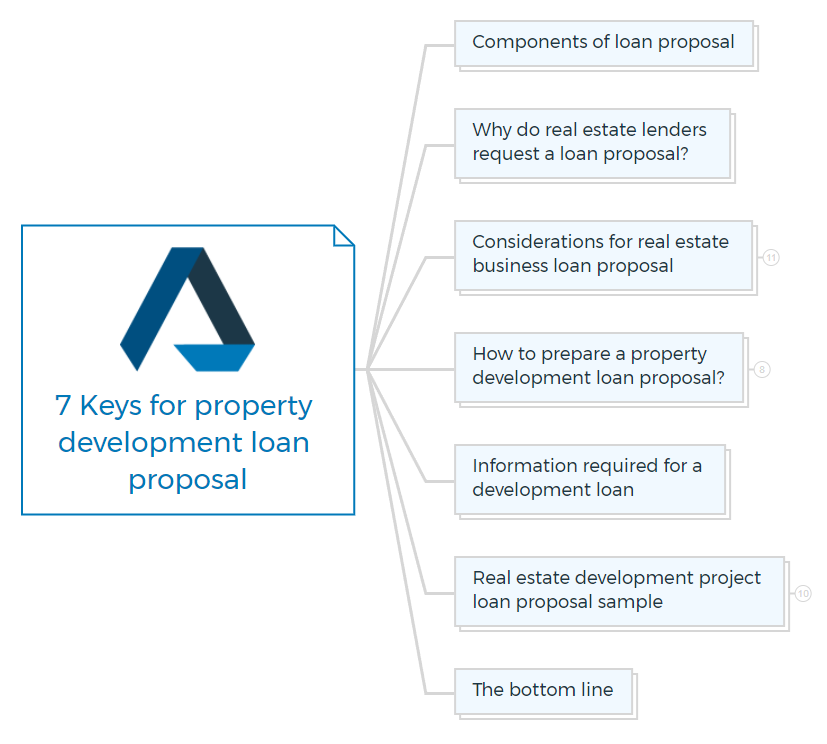
Components of loan proposal
There are several key components that should be included in your real estate loan proposal. These include:
- An overview of your financial situation. This should include information about your income, assets, and debts.
- An explanation of your credit history. This should include information about any late payments, bankruptcies, or foreclosures.
- A description of the property you are looking to purchase. This should include information about the price, location, and condition of the property.
- An explanation of your down payment. This should include information about how much money you have available for a down payment.
- A description of your loan request. Your loan request includes information about the amount of money you are requesting and the terms of the loan.
- Collateral. It includes information about any assets you have that can be used as collateral for the loan.
Why do real estate lenders request a loan proposal?
A loan proposal is a document that a real estate lender requests from a potential borrower to assess a loan's feasibility.
- The proposal includes detailed information about the property that is being purchased and the borrower's financial situation.
- It allows the lender to decide whether or not to extend a loan to the borrower.
- A substantial loan proposal makes it simple for the lender to reach preliminary conclusions fast.
- Even if a loan application isn't perfect, the proposed loan could be a good or excellent lending opportunity.
The length of a loan proposal might range from a single page to over 100 pages. The lender must balance his workload, individual output, and the comprehensiveness and clarity of the borrower's loan application.
Considerations for real estate business loan proposal
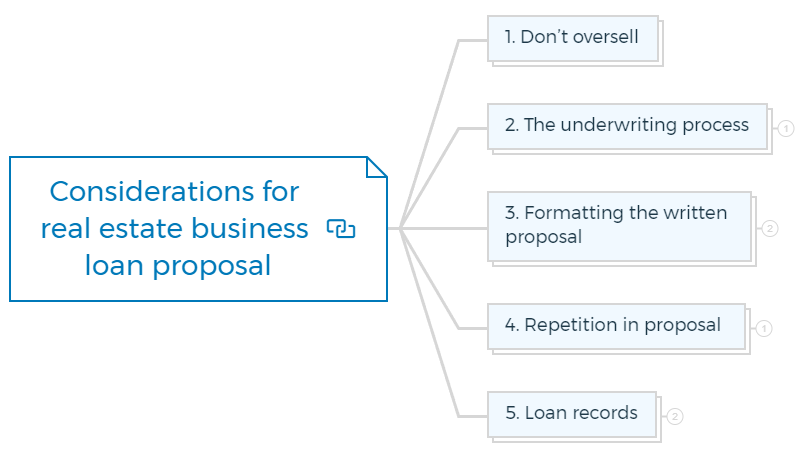
1. Don’t Oversell
Overselling a plan is the worst course of action in almost all institutional circumstances because it raises concerns about your neutrality. Lending institutions may later question your integrity if the loan is funded but does not function as expected.
The memory and perception by others of how you marketed a loan proposal several months or years ago may or may not be a factor in your job loss, depending on the seriousness of the issue.
You should make an effort to be as impartial and expert as you can.
2. The underwriting process
Even before you have all the essential information, you can wish to start drafting the loan proposal if there is a reasonable likelihood that the loan will be accepted.
You should have adequate information to draw out substantial chunks of the proposal if the borrower gave you a solid loan proposal. You can be assured that you will meet the borrower's deadline if you have completed most or all of it.
A preliminary draught can relieve you of a lot of future time pressure, stress, and suffering.

A moving target
It's a common underwriting challenge to hit a changing target. For instance, you might need to write a proposal before you can get an evaluation, an environmental report, or a report from a consulting engineer.
You would need to revise your proposal if the finished property's worth is lower or higher than expected; the engineer's report shows that the borrower's estimated hard cost budget is off by a significant amount, or the environmental assessment reveals serious issues.
It is a typical risk of the underwriting procedure, and most adjustments are usually minimal. However, you will be forced to revise your proposal or abandon it if facts or events that you consider a material change.
Abandoning a possible deal, which is painful after you have worked hard on it, is typically the right course of action if you learn new information that is significantly harmful. If it turns out that you left something meaningful out of the article, you might need to hunt for another job.
3. Formatting the written proposal
Every lending institution typically uses a unique framework for loan proposals. A clear proposal format for the underwriting imposes a discipline that gives the lending institution higher credit protection.
It may be tempting to exclude adverse facts or perform a less than complete credit analysis if a lending officer or senior reviewer has a positive predisposition toward making a loan.
This is due, in part, to the fact that senior credit officers might have to assess a lot of proposals in a single day or that a loan committee might be presented with a lot of proposals at once.
Those involved must be aware of the location of pertinent information so they may quickly discover it.

The front page
A loan proposal typically begins with a cover page (often two or three pages in length) in practically all lending institutions, which provides a standardized description of the proposed transaction.
The cover page is helpful for individuals who will evaluate and authorize the loan and those who will record and manage it after closing.
Numerous important details, loan conditions, pricing, risk ratings, institutional codes, and descriptions are provided, many of which match fields in the lender's management information system. Additionally, it is a quick approach for anyone to understand the transaction well.
Memorandum of credit
The executive summary comes typically first in the credit memorandum, which comes after the cover page. The amount and purpose of the loan—what the money will be used for—are typical elements of an executive summary.
It includes a description of the transaction (for example, a first mortgage secured by property XYZ) and a brief project/transaction analysis (typically basic LTV and debt service coverage ratios).
It also includes the rate, fee, term, and other details of the proposed transactions; the expected profitability; the names of the borrowers/guarantors, including their qualifications and histories; and a risk assessment.
The credit memorandum's content follows the executive summary. Its length may be a few pages, like four or five, or there may be no set length restriction, depending on the culture and regulations of your institution.
Its objective proposal of all pertinent information, facts, analyses, evaluations, conclusions, and suggestions will allow the reader to establish his judgments.
4. Repetition in proposal
Some loan officers make a lot of effort to be creative in their written proposals to stand out and set themselves apart from the competition. Even while they could feel some satisfaction from it, if their goal is to grow within the company, this is generally not the wisest course of action.
In lending, productivity almost usually triumphs over innovation. If you are in charge of finding new clients, devoting too much time to drafting very complex or creative reports can prevent you from doing your main job, which is calling on potential clients.
If your job function is focused on credit analysis, the more deals you can quickly and thoroughly assess, the more productivity goals you'll hit and the more time you'll have to do other things.
Copying or plagiarizing written material is frowned upon and, at worst, prohibited in many professions and industries. In contrast, it is a helpful and accepted tool in the lending sector.

What can you copy?
You can save time by copying sections from evaluation reports. The appraiser most often duplicated the data from a source used by the entire industry or from another analyst in the appraiser's office.
You must take care to use only pertinent information. Using too much material could be detrimental to your cause. The reader may get the idea that your proposal is overly scattershot, poorly thought out, or that material was added purely to impress the reader with volume rather than quality.
Other parts of the home loan proposal may be lifted verbatim from the prospective borrower, his advisor, or the broker filing it.
On an Excel spreadsheet or using a tool tailored specifically for real estate, they frequently produce outstanding income statements, cash flows, sources and uses statements, and financial projections.
Try to obtain their work immediately from a disc or via email. Then you may use the information and alter it to suit your proposal and analysis rather than spending time developing new spreadsheets and entering data.
5. Loan records
Always keep two files on hand. The first is a working file, an unofficial file that you can use to store papers, correspondence, notes, and memos for easy access. The other loan file is the "official" one, which other bank employees and external auditors will view.

The official file
You build up a loan file as you progress through the approval process. It will include an appraisal report, an environmental assessment, images, maps, budgets, credit reports, background checks, and correspondence with the prospect.
You should keep the file's content professional and objective as you construct it. You should not include personal memoranda and notes in your credit report unless they are essential to your credit analysis or are accurate descriptions of actual transactions.
It is crucial because the file could be used against you if the borrower disagrees with you or your institution or brings complaints against you or your organisation (such as accusations of discrimination, defamatory statements, or meddling in the borrower's operational business).
Once this information is in a file, it could be challenging to remove it, and elements that shouldn't be there might reflect negatively on your professionalism during assessments by internal or external auditors or senior management.
The unauthorized file
One of your best defenses against being coerced into making a loan you don't think is a good one is to closely monitor the loan and produce and submit written reports about its progress.
You should include a concise synopsis of the extra issues discussed during the approval process and how they were resolved in your initial file document.
If you can, include the summary in the official loan file. You should write it professionally and neutrally.
If there are issues with the loan, the file is well documented. If your institution's policy prevents you from inserting summaries or filing memorandums, you should write them and save them in an unofficial file.
If the proceeds as expected, your diligence has not cost you anything. You have another source of review if there are issues.
If the subject of blame arises, you can better defend yourself by examining the memos and notes in your unofficial file to sharpen and hone your memories.
How to prepare a property development loan proposal?
For preparing a real estate business loan proposal, you should include the following elements in a step-by-step manner.
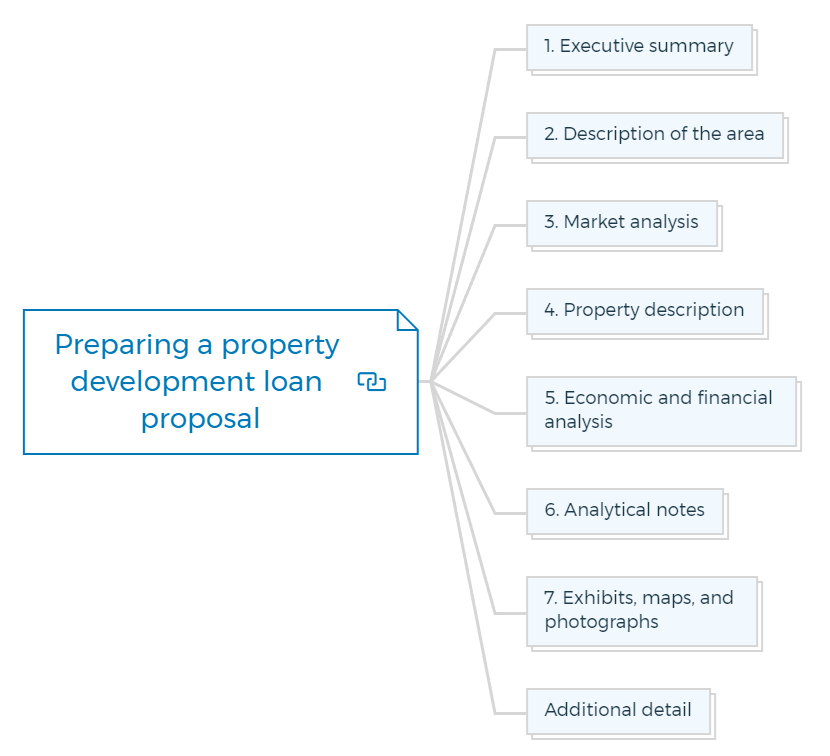
1. Executive summary
The executive summary, also known as a summary, provides the reader with a short overview of the transaction and should be limited to one or two sheets of paper.
2. Description of the area
The description of the location should be succinct and to the point. The goal should be to connect the description to the subject property through pertinent facts and observations.
Unfortunately, location descriptions are frequently copied from assessments, tourist guides, and advertising, and they can span dozens of pages.
The geographical area covered in those narratives is frequently irrelevant, while detail regarding the more vital immediate area is typically absent.
Fortunately, it is typically not difficult to get your information on a topic using the Internet, newspapers, and published information.
However, locating valuable information that the borrower should have provided will take some time. Here are some tips for collecting data for real estate investors.
Learn More
3. Market analysis
A competitive market analysis will generally include exact comparables ("comps") of nearby and similar properties to the one that the loan will collateralize. Always make comparisons with caution.
Even among the most respected property developers, market comps are frequently overstated.
Comps for a commercial project, for example, may depend on asking rents rather than signed leases. Higher comparables inflate cash flows and value, making a loan proposition appealing.
They can also make the loan request appear more conservative, leading to the lender making a larger loan than is prudent. An over loan situation allows the borrower to return their investment before paying off the loan.
Because the loan is nearly always contingent on an independent appraisal approved by your institution, if the borrower's comps are off, say, on the high side, the loan commitment, contingent on a satisfactory appraisal, can easily be changed downward.
However, you should always strive to have a good feel for the market because you do not want to waste your time and the time of others obtaining a loan approval based on a poor market analysis.
Getting a loan approved but then being unable to fund it due to a poor appraisal will not improve your standing with your bank. It can also engender "bad will" toward a possible borrower or a relationship.
4. Property description
Include a concise description of your property in the real estate development loan proposal. If there is an existing structure, determine what will be done with it (demolished, rehabilitated, etc.).
Here or in an exhibit area, floor layouts, site plans, or whatever else is relevant may be exhibited or referred to. It is the security that the lender will be lending against.
5. Economic and financial analysis
This component of a loan application, which may be the most crucial, explains how the entire transaction works in terms of dollars. You should have a complete financial picture from the day the first dollar leaves your business to the day the last dollar returns.
A single-page cash-flow statement may be all that is required in a permanent loan proposal if the property has already been developed and is producing a cash flow that presumably can support the loan that has been requested.
However, a dynamic process is involved in a real estate development project. You will most likely fund the loan regularly, costs will rise over time, and revenues may not arrive for several years.
Spreadsheet analysis is the best way to describe the time dimension. If the borrower does not supply one, you should consider making one yourself.
6. Analytical notes
The borrower should offer explanations of his critical assumptions as part of the financial-economic analysis. He should also clarify any ambiguities when working with a complex spreadsheet.
7. Exhibits, maps, and photographs
Include a map of the area as well as photos of the property. For starters, they're simple to make. For another, they provide a quick conceptual foundation for the lender to evaluate the real estate loan proposal.
Regardless of their advantages, you should not allow them to overpower you. Artist renderings, which the project's architect virtually always creates, are invariably more beautiful than the finished product.
Additional detail
When you decide to underwrite a loan, you'll need to go beyond the first loan proposal to address issues and concerns to give a good loan presentation and close the deal if the loan is accepted.
Ascertain that the borrower realizes that he must be ready to reply to your requests for information promptly. If the borrower fails to provide timely information, there may be a delay in the loan.
If a portion of the loan is to be used for property acquisition and the borrower has agreed to buy on a specified date, failing to close on or before that date may result in penalty fees, interest charges, opportunity costs, or, worse, the loss of a significant down payment.
If the borrower loses money, they may accuse you and your business and sue to recoup their losses, notwithstanding their tardiness and sole responsibility for delays.
Even if you do not receive all of the information and materials you desire, what you do receive or do not receive might be instructive.
Consider the perceived risk connected with the proposed loan, the borrower's ability, sophistication, and size, the extent and nature of the project, and the importance of the relationship to you and your institution when insisting on precise information.
Tip:
Keep in touch with the senior manager to gain his opinion and share your problems. Top management should balance borrower concerns and your requests. Send a letter or fax when you request information or have lengthy phone conversations with a borrower. If the borrower doesn't meet your institution's requirements, you can't approve his loan.
Information required for a development loan
The more the borrower can prepare, put in order, and transmit to you while the underwriting process proceeds, the less pressure both of you will feel when the closing date nears.
- Borrowing members' names and addresses, their Social Security numbers, the borrowing entity, and their tax ID numbers.
- Management members' and critical equity contributors' financial statements.
- Individual and business tax returns (minimum of two years).
- A resume or narrative describing all of the major players and crucial players.
- Significant participants' financial and commercial references.
- If the property has already been purchased, a copy of the sales contract or closing statement is required.
- If there have been any recent capital upgrades to the property, make a list.
- Specifications and plans.
- Budgets for hard and soft costs.
- Schedule of how the equity and loan proceeds will be used (sources and uses statement).
- Statement of operations in pro forma.
- Attorney or attorneys' names.
- Architects' and engineers' names.
- Construction manager, general contractor, leading subcontractor names, and resumes.
- A copy of the most recent real estate tax bill, as well as water and sewer bills
- Insurance firm, as well as the amount and types of coverage.
- If appropriate, recent unit sales and leases.
- If applicable, copies of leases or lease abstracts (summaries of lease terms) or a few examples of leases chosen by you.
- A current rent roll includes square footage, lease terms, clauses, bump-ups, escalations, rent per square foot, tenants' names, expiration dates, arrearages, and other essential lease details.
- A copy of the offering prospectus with changes if the property is an existing condominium or cooperative.
- At least two years of property operating statements, if applicable
- Existing mortgage documents, including outstanding sums
- If available, a recent evaluation and feasibility study.
- If available, a recent Phase I environmental report.
- If accessible, engineering papers, zoning analyses, municipal permissions, etc.
Real estate development project loan proposal sample
A professional loan proposal sample for a real estate deal may be helpful if you want to learn how to create a loan proposal for real estate or adjust to the template you have on file.
It is a loan presentation for a construction loan to renovate and convert a six-story manufacturing facility to residential use.
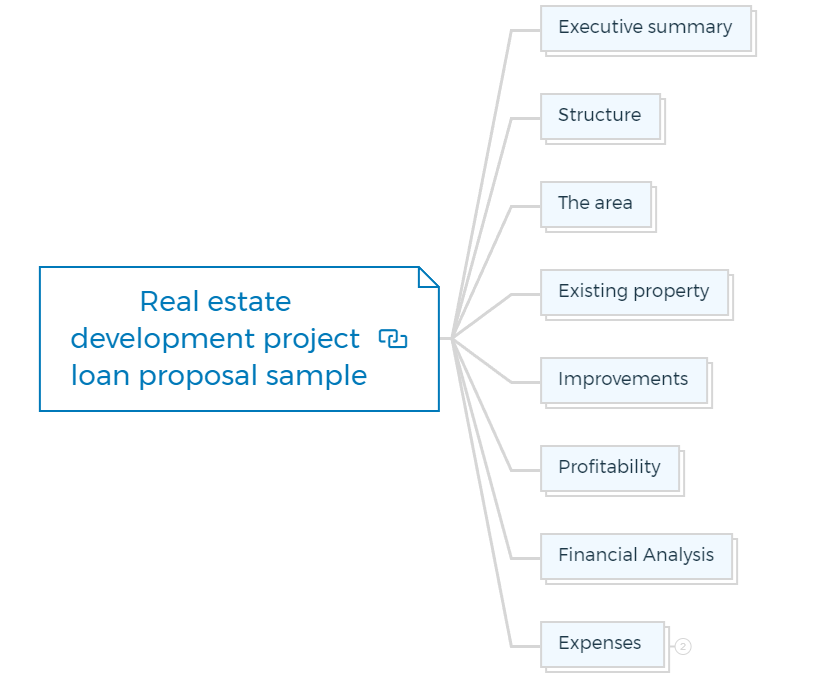
Executive summary
ABC Group (ABC) buys a vacant six-story building on XYZ Street. Property owner is selling its decades-old manufacturing facility for $8million.
The business is no longer feasible after a decade of increased overseas competition.
Real estate values have risen, and residential and retail demands have soared. The family is motivated to sell because the building's traditional usage is no longer sustainable, and it's worth is high.
ABC's ownership and development of the XYZ area for residential and retail use is a desirable prospect, given the building's location, clean condition, property market attributes, and acceptable agreed price of $8,000,000. A transaction summary follows.
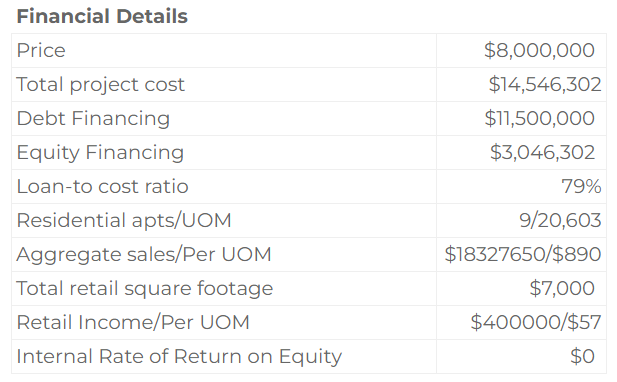
Get The Edge Now!
Discover the transformative power of our FREE EDGE platform and
unlock a world of opportunities at no cost!

Your Real Estate Toolkit Awaits!
Free eBooks, Courses & Feasibility Suite Trial—Join Today!
✓ Unlimited FREE Trial: Experience the full power of our Feasibility Suite with hands-on demos
—explore without limits, no time pressure & without commitment or credit card!
✓ Learn from Success: Dive into real-life case studies for practical insights.
✓ Engage, Inquire, and Innovate: Ask questions, request features, and engage in lively discussions.
✓ Showcase Your Projects and Gain Insights: Share your projects and get personalised feedback.
✓ Free Resources Galore: Access a treasure trove of free resources,
eBooks & courses to keep you informed.
✓ Exclusive Training: Enjoy members-only training to sharpen your skills.
Structure
ABC group is buying the property for $8,000,000. Planning, permissions, coordination, organization, and construction will take a year after closure.
There will be nine homes and 4,500UOM of retail space. All residential units should sell in the second year.
Conservatives are expected to sell eight in the second year and one in the third. The eight sales will pay off the $11.5MM acquisition/construction debt.
They should entirely lease the retail area by the second year.
Using third-year retail cash flows, discounted cash flow, and loan-to-value methodologies, a $3.5MM refinancing is estimated for the fourth year. Retail space will likely be sold within 10 years.
The area
Demand for housing and retail space soared as the city's economy did. The area now has art shops, furniture galleries, and upscale eateries. It's a nice spot to live and visit.
This desirability is fueled by successful professionals who desire to reside in one of the city's most active and prominent neighborhoods. Both sales and rental prices are now high in the area.
Existing property
The six-story, the full-basement building, is on a 50-by-100-foot square lot. It's a red brick building from the early 1900s supported by steel and wood columns and sturdy oak beams.
Despite minor settling, the structure looks pretty sound due to large dead loads from fixed machinery. The home's four windows are a plus. Many nearby buildings only get light from the front and back. The building's 11- to 16-foot ceilings are another noteworthy feature.
The facility, chemical samples, and Goods' paperwork, permits, and storage revealed no environmental threats. Lead-based paint and asbestos can be readily and affordably confined or removed.
Improvements
Demolition, cleanup, and new construction should go quickly because the building will be unoccupied, the outer walls are bare, and there is no ceiling cover. Two freight elevators are operational, one with street access. It will ease equipment and material movement.
The rebuilt building will include retail on the main floor and housing above.
ABC will reduce the building's depth from 100 to 80 feet on levels 2 through 6. They can use the reduced Unit Of Measurement for a penthouse on the roof.
A stairway on the seventh level will lead to a 200UOM enclosed "crow's nest" that will lead to the rooftop roof terrace.
Plans call for two units on levels 2, 3, and 4. The fifth and sixth levels may have one, two, or two simplexes and one duplex. The basement will provide 2,500 UOM of retail space, 1,500 UOM of residential storage, and 1,000 UOM of mechanicals, gas-fired heaters, and water heaters.
A skylight will be above the store's rear. The front of the real estate property will stay essentially unchanged, except for the fire escape.
One elevator will serve the area's flats. It's meant to be strategically positioned so each tenant can enter as soon as the elevator door opens. Every unit will include two bathrooms with stone worktops and top-of-the-line fixtures.
Kitchens will have Sub Zero freezers, granite worktops, and other high-end products. Oak flooring will be everywhere except in kitchens and baths.
Baseboards and crown molding will be high-quality.
Sheetrock will cover exposed joists to offer sound insulation, light treatments, and a smooth, solid surface. Original columns and beams will be exposed to add authenticity.
Since ABC has extensive expertise in maintaining and rehabilitating the City buildings, finishings and work may be done successfully, efficiently, and cheaply. The final product will be market-ready.
Profitability
With eight apartment sales and retail rent, the project will earn $15.7MM in its second year after ownership. It will generate $3.4MM after paying off the acquisition/construction loan.
With one residential unit and no debt service, practically all of the $2.4MM in gross revenues fall to the bottom line, resulting in a $2.3MM net cash flow.
After three years, the remaining retail part, which generates $400M annually, can be financed or sold. If the retail space is sold for $1,646M after 10 years, the initial $3,046M equity investment will provide a 49 per cent IRR.

Get The Edge Now!
Discover the transformative power of our FREE EDGE platform and
unlock a world of opportunities at no cost!
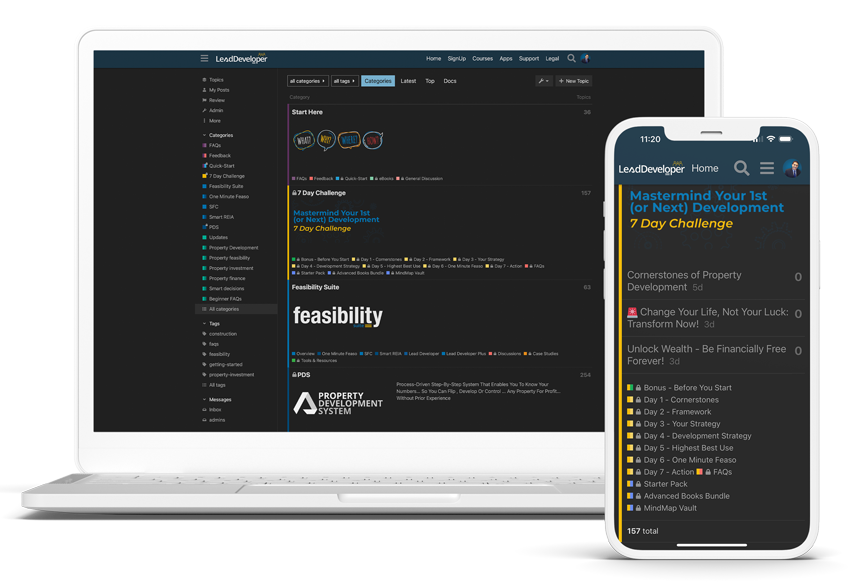
Your Real Estate Toolkit Awaits!
Free eBooks, Courses & Feasibility Suite Trial—Join Today!
✓ Unlimited FREE Trial: Experience the full power of our Feasibility Suite with hands-on demos
—explore without limits, no time pressure & without commitment or credit card!
✓ Learn from Success: Dive into real-life case studies for practical insights.
✓ Engage, Inquire, and Innovate: Ask questions, request features, and engage in lively discussions.
✓ Showcase Your Projects and Gain Insights: Share your projects and get personalised feedback.
✓ Free Resources Galore: Access a treasure trove of free resources,
eBooks & courses to keep you informed.
✓ Exclusive Training: Enjoy members-only training to sharpen your skills.
Financial analysis

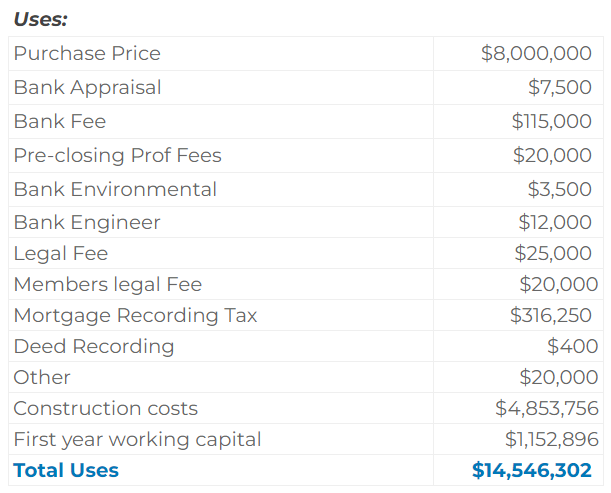
Expenses
Sources and uses estimations show attorney's fees at closing. According to ABC's experience, condo closing costs, including attorney's fees, average $6,000 per unit. Fuel and utilities cost $1/UOM. Supplies, repairs, and maintenance cost $0.60 per UOM.
ABC will have a hired salesperson on-site and advertise to encourage direct sales, so broker fees are 5% of gross sales. They will also hire staff six months after closing for $60,000 per year. Note that expenses grow annually.

Debt/Equity:
Equity and loans total $3,046M and $11,500M. ABC's borrowing rate is 7%. Each sale requires a 75% principal paydown.
Capital improvements:
A total of $4,854 million was used. This conservative estimate may be higher than what will be realized.
The bottom line
Lenders want to understand your business. These lenders accept some risk, but a well-developed loan proposal helps them comprehend the dangers and enhances your loan approval prospects.
Putting all of the pieces of a loan proposal together will create a clear image of your project to the source of funding, allowing them to make a quicker judgment on whether or not they can provide the funding you require.
If you want more insight into preparing an effective proposal or acquiring your own real estate development finance, enroll for the Property Mastermind Now!
FAQs

